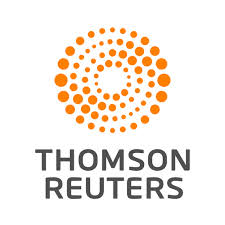 With the copper market expected to post a moderate surplus this year, copper prices are expected to remain under pressure. The annual average price is expected to fall below $7,000/tonne in 2014 for the first time since 2009, with a test of the $6,000/tonne level deemed likely over the second half.
With the copper market expected to post a moderate surplus this year, copper prices are expected to remain under pressure. The annual average price is expected to fall below $7,000/tonne in 2014 for the first time since 2009, with a test of the $6,000/tonne level deemed likely over the second half.
- The copper market was in a largely balanced position in 2013, despite global mine production rising by 8%, its fastest pace in over a decade. Robust demand growth, a tight scrap market and delays in processing concentrate into refined metal limited the size of the market oversupply.
- Stockpiling of refined metal within China over the closing months of 2013 also exacerbated the tightness in cathode availability. This helped place a floor under prices and inflated physical premia as 2013 progressed.
- On an intra-year basis, prices nevertheless still fell 9%, pressured by the uptrend in global mine output. More recent concerns surrounding slowing Chinese growth and the sustainability of the copper financing trade saw prices weaken further to near-four year lows in mid-March 2014.
Thomson Reuters today released its GFMS Copper Survey 2014, the fifth edition of this report on the copper market, at an event during CESCO Week in Santiago, Chile. This year’s study notes how copper prices continued to exhibit a downside bias in 2013 as a sharp acceleration in global mine supply and uncertainties over the global economic recovery dented the red metal’s near term prospects. More recently, concerns over underlying Chinese demand and the sustainability of the copper financing trade have imparted further downward pressure, with copper crashing to a near-four year low in mid-March 2014.
Rob Smith, Senior Base Metals Analyst from the GFMS team at Thomson Reuters, noted that “whilst many commodities markets have been on the back foot of late, the copper market has been particularly susceptible to weakness given its heightened exposure to the Chinese market, through both traditional end-use demand as well as finance-related routes. With the risks to the copper market skewed to the downside, against a backdrop of rising mine supply and modest market surpluses, prices are likely to remain subdued over the rest of this year”. Thomson Reuters forecasts that copper prices will trade within a broad range of $6,000-7,000/tonne for much of the remainder of 2014.
The copper market is now in the midst of a period of strong supply growth, as miners begin to deliver on investments made during the boom years. Thomson Reuters estimates that global mine production grew by 8% last year to 17.8 million tonnes, with Chile and the Democratic Republic of Congo making standout contributions. In fact, mine production increased across all regions, boosted by higher productivity at major mines, ramp-ups and commissioning of new projects and expansions. Looking ahead, mine output is set for a period of above trend growth that will lead the copper market into surplus over the medium term, although it should be acknowledged that rising capital costs, easing prices and a shift in mindset amongst mining companies towards one of constraint could lay the foundations for renewed tightness later in the decade.
The growth in refined output was more lacklustre, rising a comparatively modest 3% to 20.7 million tonnes. This reflected a number of dynamics, including technical problems at some smelters processing material from new mines, logistical issues and stockpiling of concentrates in remote locations. Maintenance shutdowns at key smelters and limited scrap availability were also key contributory factors.
Global copper consumption, meanwhile, posted an impressive performance last year, rising 4%. This was a noteworthy improvement on the largely flat performance seen in 2012 and represented the fastest pace of expansion since 2010. A rapid acceleration in Chinese demand growth, to 9% in 2013 from 4% in 2012, was a key driver of the gain, while an improvement in the mature economies also added a degree of support to the global total. Overall, Thomson Reuters estimates that all end-use sectors recorded gains last year, with the most noteworthy seen in the electrical and electronic products sector (+6%), driven by the ongoing expansion in the Chinese power utilities sector.
Global exchange inventories fell by 83,000 tonnes in 2013, with drawdowns concentrated in the second half. This compares with Thomson Reuters estimated market surplus of 49,000 tonnes last year. The apparent mismatch is attributed to a shifting of material to off-exchange locations within China over late 2013, a trend that continued into early 2014. Indeed, Shanghai bonded warehouse stocks have increased over recent months, reversing the drawdowns that took place during early and mid-2013, whilst material is also believed to have accumulated at other coastal cities, amongst other locations. A key factor leading to this stock shift has been the ongoing demand for copper for financing purposes, concerns over the sustainability of which contributed to a sharp sell-off in copper prices in mid-March. Although Thomson Reuters see the most likely scenario as a continuation of such activities, albeit likely on a smaller scale than previously, such worries have added to the downside risks facing the copper market in light of prospects for improved metal availability going forward. Given copper’s downbeat short-to-medium term outlook, a downside bias is expected to be maintained, with prices likely to test the $6,000/tonne level over the second half of 2014.
